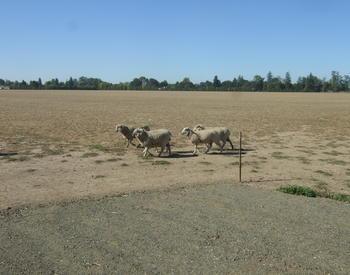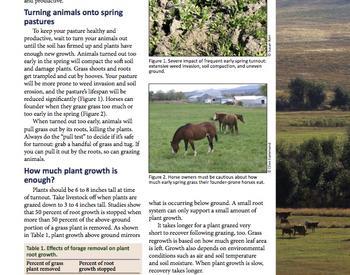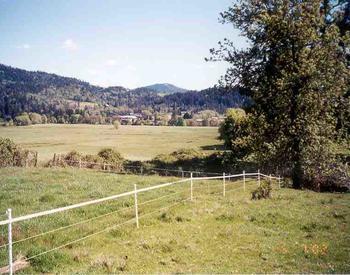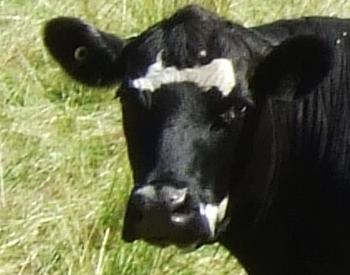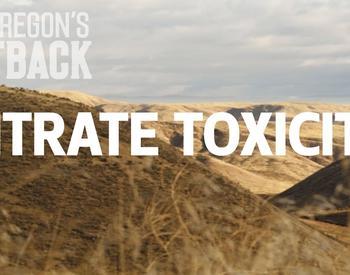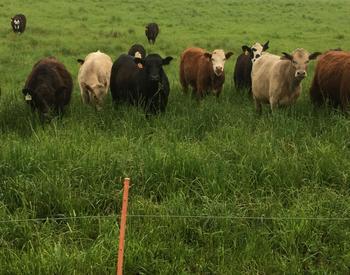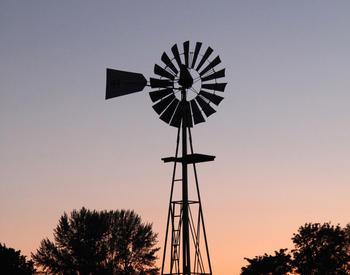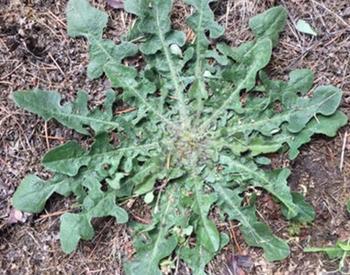Mature cattle grazing pasture with rapidly growing grass are sometimes found to be afflicted with a disease called grass tetany. It is characterized by an uncoordinated gait (grass staggers), convulsions, coma and death. The primary cause is limited dietary intake of magnesium (Mg) leading to hypomagnesemia (low blood Mg) in the cow.
Cows nearing calving and up to two months post-calving are most susceptible as they must draw on feed and body reserves to supply minerals for milk production. Tetany is rarely observed in younger cattle. In sheep, it is not a common problem but may occur in ewes in the first few weeks after lambing.
Addressing the primary cause
Tetany-prone pastures are typified by rapidly growing grass with a slow plant uptake of Mg from the soils. This leads to succulent forage with a low Mg content (less than 0.12%). Most tetany episodes occur in the months approaching spring and on into the growing season, but can also occur after the flush of growth in the fall. Heavy nitrogen fertilization, high soil potassium levels and cool, rainy weather accentuate the problem.
If you can delay the use of tetany-prone pastures by mother cows until forage growth is less lush or include dry forages with safe levels of Mg (0.2 to 0.25%) along with pasture, it will help decrease the incidence of grass tetany. Graze less-susceptible animals (steers, heifers, dry cows, cows with calves over four months old) on these tetany-prone pastures. Cattle that develop grass tetany are prone to repeat occurrences so cull these animals out of your herd. Planting legumes along with grasses can help increase Mg content of the pasture diet.
Trace minerals
Although grass tetany is a problem in mineral metabolism, preventing it is not always possible just by providing a trace mineral supplement (with or without salt). Of course, making trace minerals available to livestock is certainly recommended in order to satisfy the daily requirement for essential minerals under normal circumstances.
The problem in trying to prevent grass tetany with a mineral mix is inconsistent consumption of supplements, especially on large pastures.
- Try using a trace mineral mix with high Mg available through your veterinarian or visit your local feed supply store for other alternatives.
- Be sure to evaluate cost and effectiveness of any supplement you choose for the specifically intended use. Loose mineral mixes, compared to solid blocks, are more uniformly consumed and the amount eaten can be monitored on a weekly basis.
- Feed minerals out of a strategically placed weather-resistant container.
- Alter the location of the mineral mix to help distribute your cattle more evenly around the pasture. This will help with manure distribution (natural fertilizer) and give more uniform grazing of the forage (promotes healthy pastures).
Magnesium oxide (MgO) is a common form of Mg; however, it is not very palatable. Try mixing MgO with dry molasses to make it more attractive to your cattle. Fortifying the drinking water with Mg is an alternative to mineral mixes. MgO is insoluble in water, so make sure you use the proper amount of a soluble form so that toxic amounts are not consumed. Supplement levels up to 0.25 lb/day are not toxic to cattle. However, Mg at 0.4 to 0.8 lb/day has resulted in deleterious effects. The National Research Council has established maximum tolerable levels of Mg for beef cattle at 0.4% of the ration.
Harvested forages
Typically, harvested forages (especially grasses) are not rich in Mg. Forages with less than 0.12% Mg are considered tetany-prone, while those with 0.12 to 0.18% Mg are marginal and 0.2 to 0.25% Mg are safe. In examining hay samples from several Oregon counties, it was found that 10% of the harvested forages listed were considered tetany-prone (average 0.09% Mg), 29% were marginal in Mg content (average 0.17%), while the remaining had safe levels of Mg (average 0.26%; Oregon Forage Library, Oregon State University, Corvallis, OR).
The range of Mg in the hay surveyed was 0.06 to 0.36% on a dry matter basis, with no pure alfalfa hay in the Forage Library qualifying as tetany-prone hay. Besides Mg, minerals such as potassium (K) and calcium (Ca) can contribute to grass tetany.
A so-called tetany ratio using these minerals can be calculated for forages. If this ratio is greater than 2.2, the forage can be classified as tetany-prone. The tetany ratio is calculated on an equivalent weight basis (that is, does not use the percentage or ppm as shown in the feed analysis report but rather uses the amount of each element corrected for molecular weight.)
The formula is: (K concentration/39) / (Ca concentration/20) + (Mg concentration/12.1)
Calculating ratios for the hay in the Oregon Forage Library, 44% of the harvested forages examined were considered tetany-prone feeds. This brings home another point on the importance of providing trace minerals to livestock at all times.
Treatment of grass tetany
Treatment of grass tetany is difficult because of the rapidness with which the disease progresses (within hours). Be prepared to respond on your own, help may be too late in arriving.
- Commercial preparations of Mg solutions for injection under the skin are available.
- Intravenous injection is also an option, however, rapid delivery can be harmful to cardiac function.
- Administration of Mg enemas is another possible emergency treatment.
Keeping stress to a minimum is critical with grass tetany. Treat affected cattle, increase the supplemental Mg of the remaining animals’ diet (2 oz of MgO per head per day), quietly remove the herd to more mature pastures or legume mixed pastures, or to a location where they can be fed hay and supplemental Mg.
Be prepared for this disease by taking preventative measures and by keeping supplies on hand in case you need to treat animals. The best cure is prevention. Keep daily Mg supplied to the cattle when tetany problems are anticipated. Contact your veterinarian to discuss a herd health program and for help with specific incidences of grass tetany.
